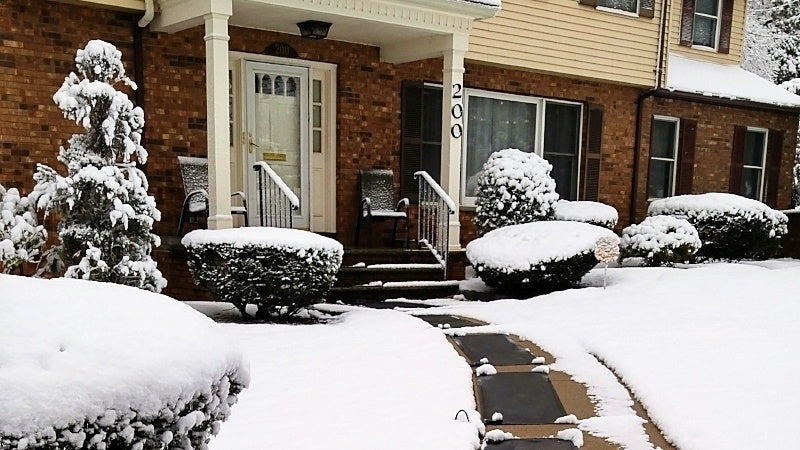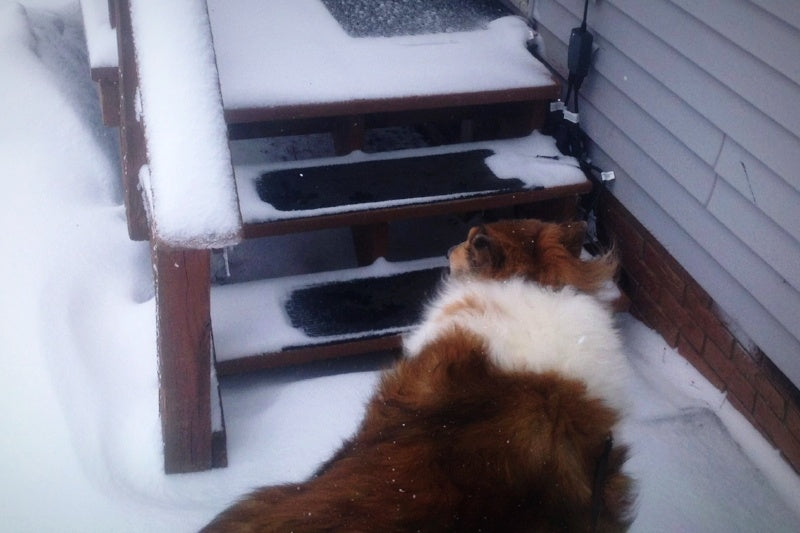
Outdoor walkways, whether a simple path connecting your driveway to your main entryway or a winding backyard path that lets you more fully enjoy your landscaping, add value and usability to your home. Yet, that path to your driveway, pool deck, fire pit, gazebo, or garden will need to be deiced to be used during winter. And unless you find another way to melt the snow and ice off your walkways besides with salt, you may end up damaging them and shortening their lifespan.
The three main materials homeowners use for solid walking paths are concrete, brick, and stone. Let us see how salt affects each one of them:
Salt Damage to Concrete
While rock salt and other deicers are effective, depending on the outdoor temperature, at melting away snow and ice, they can also damage the surface and inner structure of concrete pavements.
Salt, being slightly acidic, lower concrete's pH level and increases the size of pores on your concrete's surface. This allows water to seep in, go through freeze-thaw cycles, and weaken/crack your concrete.
Additionally, salts are "hygro-scopic," which means they attract and absorb water. You could easily have 10% extra water retention inside concrete pores because of this property of salt. Surface deterioration, called "spalling," is the main result in this case.
Third, salt speeds up the corrosion of reinforcement metals in your concrete. This happens, in part, due to a lowered pH level, which is harder on steels. A second way reinforcement is rusted is by the chlorides that salts bring into the concrete, for chlorides cut through the steel's outer protective layer and expose it to easier corrosion.
Salt Damage to Brick
Experts argue about the best way to deice brick, whether by snow blowers or a simple shovel, but they all agree that salts and deicers are harmful to bricks. If brickwork is laid down evenly, it can be cleared manually as safely as concrete, but the temptation to use salts arises when improper installation, tree roots, or expansion/contraction of underlying soil makes your brick pathway uneven and hard to shovel/snow-blow without damaging it.
However, salts leave crystal deposits on bricks that seep into their surface and cause "efflorescence." This discoloration may make bricks look old and worn before they are. It can be easily washed off with water, but it will continue to reappear for years once it has been deeply absorbed into the brick through its porous surface.
Salt Damage to Stone
There are many different varieties of stone used for walkways, including slate, limestone, and flag stone, and each type of stone may react slightly differently to winter's snow and ice. They may also react differently to salts, but here is a general description of how salt affects most stone materials.
First, salts from deicers, cleaning solutions, air pollutants, and sea spray can enter the pores of stones, where they draw in water and cause cracking/spalling when the water freezes and expands. Stones with bigger pore sizes are most susceptible to this kind of damage.
Second, frost can damage stones that are wet/damp and subjected to severely low temperatures. We mention frost damage because, in some cases, it is only after stone has been damaged by salt that ordinary frosts begin to significantly further deteriorate it.
How to Keep Paths Clear Without Salt
Salt, then, will accelerate the deterioration of all major materials used for home walkways and paths. As an aside, note that it also will kill off vegetation lining those walking paths and cost you more on landscaping next spring.
It may be possible to simply let the snow/ice lie on some outdoor paths and not use them during the winter season, but at the very least, a snow and ice free path must be maintained between driveway and doorway and to garages/sheds not otherwise accessible.
One of the most practical solution is to use snow-melting mats along outdoor walkways during the winter. These consist of two layers of slip-resistant rubber that surround a central heating element. They can be left on to keep paths continually clear or used as needed. They can melt several inches of snow in an hour or two, depending on conditions, and they can also keep run-off from refreezing.
The only other options would be to plant your path with a salt-resistant herb like Thyme, use loose gravel, or install a sub-pavement snow-melt system. The latter option is relatively expensive, though sometimes worthwhile. The first two options eliminate concern about salt damage but make it difficult to shovel snow if necessary.
Outdoor walkways, whether made of concrete, brick, or stone, can all be damaged by salts found in common deicers. Snow-melting mats are one of the best ways to eliminate this dilemma, in addition to alternative snow removal options mentioned above.


